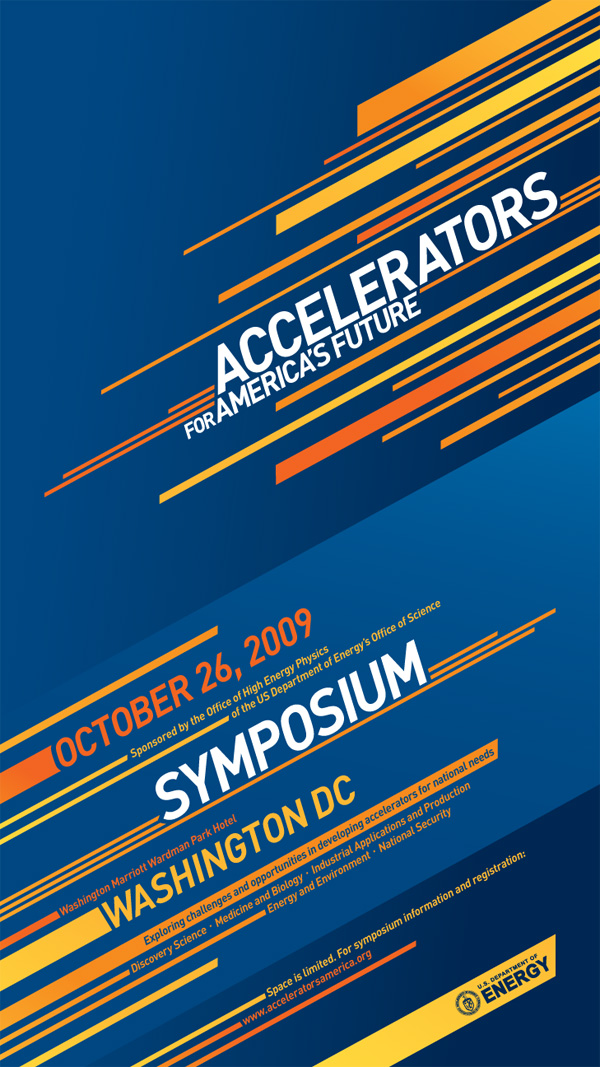The first thing the word accelerator brings to mind is often a high-energy machine like Fermilab’s Tevatron or CERN’s Large Hadron Collider. But accelerators are ubiquitous in modern life; they can be found everywhere from factories and hospitals to basic research labs and national security facilities.
“For the past 30 years there have been sporadic attempts to integrate accelerator development across all these fields,” says John Corlett, head of the Center for Beam Physics in Berkeley Lab’s Accelerator and Fusion Research Division (AFRD). “Now DOE’s Office of High Energy Physics has organized a symposium that addresses the issue head on.”
The Symposium on Accelerators for America’s Future will be held in Washington, D.C. on Monday, October 26, co-chaired by Walter Henning of Argonne National Laboratory, a renowned nuclear physicist who was formerly head of Germany’s GSI Darmstadt, and former Berkeley Lab director Charles Shank. The stated aim of the symposium is to tackle the challenges of designing and building accelerators to meet the nation’s needs in discovery science, medicine and biology, industrial applications and production, energy and environment, and national security.
Working groups in each of these major areas will meet in closed session for two days following the day-long event to write a report for the Office of High Energy Physics that is expected to bear considerable weight on DOE’s plans for the future.
“This could have a big impact on Berkeley Lab in terms of the Office of Science’s vision and direction in accelerator development,” says Corlett. He cites a planned symposium presentation on light sources, once seen as a spin-off from “real” accelerators but now the drivers of vital research in many fields. Integrating new kinds of light sources into the earliest stages of overall accelerator planning, says Corlett, “will be a big change.”
Berkeley Lab scientists are members of the working groups and are submitting over a dozen white papers that will serve the groups’ goals of identifying the greatest future needs and most promising developments, with an emphasis on cross-cutting challenges and attention to bridging the gap between accelerator research and actual deployment.
Roger Falcone, head of the Advanced Light Source and the Lab’s associate director for photon science, and Wim Leemans, head of the LOASIS laser plasma accelerator program in AFRD, are members of the discovery science group. Ellie Blakely of the Life Sciences Division and Andy Sessler of AFRD are members of the medicine and biology group (whose co-chair is retired AFRD scientist Jose Alonso). AFRD’s Peter Seidl is a member of the energy and environment working group, and William Fawley of AFRD is with the security group. AFRD division director Steve Gourlay and AFRD’s Dan Dietderich and Christoph Steier are also contributing to the symposium’s work.
White papers from Berkeley Lab scientists have been submitted in four areas, with a concentration on discovery science, including reports on intense muon beam accelerators, laser plasma accelerators, future light sources, warm dense matter, bright electron sources, ion nanobeams, superconducting magnets, ion sources and injectors, accelerator modeling, and superconductor technology for ultra-high field dipoles. A paper in medicine and biology addresses particle therapy, one in energy reports on accelerators for fusion energy, and two in security describe neutron and gamma-ray generators and gamma-beams and detectors for remote sensing.
In addition to members of the working groups named above, authors include Mike Zisman, Bob Hettel, Jonathan Wurtele, Fernando Sannibale, Thomas Schenkel, Daniela Leitner, Claude Lyneis, Rob Ryne, Shlomo Caspi, GianLuca Sabbi, David Robin, and Cameron Geddes.
Corlett anticipates that the final report will be “a view of the landscape from pretty high up,” but one that will have a positive influence on the symposium’s goal of promoting the accelerators of the future.
